Jerrems Family Newsletter
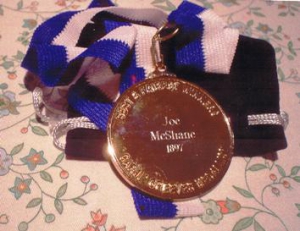
Dear Donald,
leaving Australians to muse over what had actually
happened, and what might have been. In this edition
we draw on football stories involving readers of the
Jerrems Journal and their forbears, to fill the void left
by the season’s ending.
| Anita Veale’s AFL Heritage |
Ray Jerrems, Family Historian
Who is Anita Veale, and what is “AFL”?
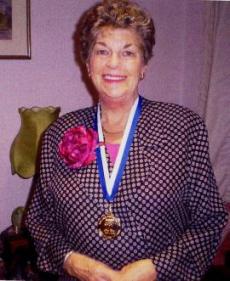
Anita’s father
was Arthur Ernest Jerrems, who in turn was the
grandson of Robert Cane Jerrems, one of the family
who migrated to Australia in the 1850s. Her husband
is George Veale, and she is an avid reader of Jerrems
Journal.
Coincidentally my daughter’s maiden name
was “Anita Jerrems” also, and my father’s name was
George.
The answer to the second question is that the
term “AFL” means “Australian Football League”, which
is made up of Australian Rules Football clubs. For the
uninitiated, Australian Rules Football is loosely a
combination of Rugby Union/Gridiron and Gaelic
Football. Uncouth Rugby Union followers have
nicknamed it “aerial pingpong”.
Anita’s credentials as an AFL enthusiast go back a
long way. Her great grandfather Robert Cane
Jerrems
played for Melbourne’s Richmond Club in the 1870s,
and was described in the publication “History of
Australian Rules Football” as a leading player. Robert
had obviously been successful in making the
transition from being a “Pommie” migrant to a staunch
Aussie.
The Richmond Club still fields a team in the national
competition and the team is known as “The Tigers”.
But Anita Veale has even stronger credentials from
her mother’s side of the family. Anita’s maternal
grandfather, James McShane, was one of six
brothers
who played Australian Rules Football at the most
senior level for the Geelong Football Club (“The Cats”)
in the late 1800s. The six McShane brothers,
household names in their day, were
John: A brilliant rover who always gave his all,
and
vice-captain of the 1886 championship team. Sadly
he died from rheumatic fever in 1887 as a 23 year old.
His death caused widespread sorrow at the time and
2000 people attended the funeral.
Phil: Also a member of the 1886
championship side,
he was a brilliant goalkicker who established the
club’s all-time record of 58 in that year.
Tom: Another of the 1886 side who was the
Victorian
Football Association’s leading goalkicker for 3
seasons.
Joe: Pictured 1895. Spent most of his career
in the ruck. He
captained the side in 1895, represented Victoria and
went on to captain the Carlton Club for 1902-4. He
was awarded the Geelong Club’s Best and Fairest
award in 1897 and went on to captain the Carlton
Football Club in 1902-4. A portrait of Joe is displayed
in pride of place at the Geelong Club.
Jim (Anita’s grandfather): Could play almost
anywhere and spent all but 2 seasons with the Cats
between 1894 and 1901. In his finest performance he
kicked a remarkable 11 goals in a game against St
Kilda in 1899.
Henry: The “baby” of the family. A half-back
flanker
who first played for the Cats in 1893, playing 6
seasons with them before (like his brother Joe)
joining Carlton Football Club.
Having six brothers playing for a senior football club is
to my knowledge an Australian record and would
probably rank near the top on the world stage. Anita
and George challenge other Jerrems Journal readers
to cap the McShane story. The Guinness Book of
Records has not succeeded in doing so.
When the Geelong Club was formed in 1859 it was
the second football club of any code throughout the
world and still competes in the national competition. It
is named after Geelong, a city a short distance to the
west of Melbourne, Victoria.
McShane
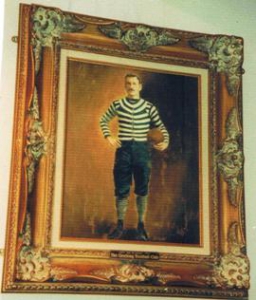
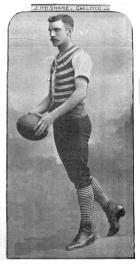
| Geelong Football Club Remembers the McShane Brothers |
Ray Jerrems, Intenet Sleuth
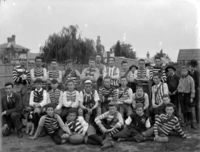
Several years ago Anita sent me a newspaper article.
The occasion giving rise to the newspaper article was
the unveiling of an imposing plaque (commissioned
by the Geelong Club) at the McShane family’s
gravesite at Eastern Cemetery, Geelong. Anita
unveiled the plaque in 1998 in a ceremony attended
by Club representatives, family and friends. The
unveiling was followed by lunch at the Club.
The Chairman of the club’s History Committee paid
tribute to the McShane family at the ceremony:
“This family is unsurpassed as far as Geelong
Football Club is concerned. No family has contributed
more to this club in terms of players”.
I would call that an understatement!
In 2004 Anita and her husband George were guests of
honour of the Club at an official function held at the
sumptuous Crown Palladium. The Club presented
her with the medal awarded to her great uncle Joe in
1897.
Interestingly, none of the next generation of McShanes
produced any Australian Rules players of the same
calibre, although it was not due to a lack of offspring.
Jim had 12 children, including Anita’s mother Therese!
Pictured: Boys football team, circa 1860 – 1900.
| The Cats Finally Pounce |
Ray Jerrems
The Chicago Cubs should be so Fortunate
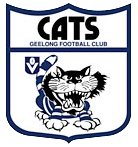
At last, the Geelong Cats have won the Australian
Football League premiership after a 44 year drought!
Hurray!
After successfully testing their claws on the other
teams during the 2007 season Geelong played an
Adelaide team in the Grand Final on 29th September
2007. In front of almost 100,000 fans they produced a
leonine performance and won by a record margin of
119 points, This was the first time in a century that a
winning team has won by more than 100 points. The
score was 163 to 44.
This was not a casual backyard cat spat, it was a
mauling.
To add to this feat, one of the Cats players had been
awarded the Brownlow Medal (the prestigious “best
and fairest” award in the competition) and a record
nine “All-Australian Team” selections were made from
the team.
It was also fitting that the victory came less than a
week after Anita and George had celebrated their 53rd
wedding anniversary.
I must admit that I only watched the first part of the
match on television, I listened to the rest on a
transistor radio at a riverside park because my grand
daughter Jessica insisted that I should put my time to
better use. I received some funny looks as I helped
her build sand castles, with the transistor up to my ear!
Hopefully the friendly tone of this article will help
remove a degree of frostiness (just joking) between
Melbourne and Sydney readers. You see, in 2005 the
Sydney Swans won the National Premiership for the
first time in about 70 years. To add to this indignity
they knocked out Anita’s beloved Cats in a semi-final.
I rang Anita when the Cats were knocked out and she
generously offered to barrack for the Swans.
| Alexander Jerrems Strikes Gold in the United States |
Ray Jerrems
Family Sports Legend
Meanwhile, in the same era as his Uncle Robert was
playing football in Australia and the McShanes were
rewriting the record books, Alexander Nicholl
Jerrems
was marking his mark in American Football (known in
Australia as “Gridiron” because the many lines in the
field of play resemble a gridiron).
Alexander, a son of Robert’s brother William George
Jerrems, was born in Australia in 1874. He played for
Yale University from 1893 to 1896 and achieved fame
in Yale’s sporting annals because he was carried off
on a stretcher in the memorable 1896 annual grudge
match against Harvard. In his opening season for
Yale in 1893 he played right half back, but in later
years he seems to have shifted to full back. He was a
good strategic kicker, gaining valuable yards in his
matches.
At one stage the New York Times reported
that “Thorne, Jerrems, and De Vitt are, taken together,
stronger in their offensive play than any other three
backs playing to-day.”
A measure of the senior level of the competition was
that the New York Times covered the matches in detail.
Alexander was also a good baseball player. In April
1896 he played a match for Yale in which “Hazen and
Jerrems did the best work for Yale. Jerrems caught
five hard flies, and did the hardest hitting.”
In 1896 and 1897 he was college football head coach
for the University of Minnesota, coaching the
Minnesota Golden Gophers. His football career then
recedes from view in the annals of American Football
history, probably because his father William George
Jerrems told him that at the ripe old age of 23 his
energy could be put to better use in the family’s
tailoring empire. One is left to surmise what he might
have achieved if he had continued playing at the
senior level.
Do any readers have other football stories to tell us?
